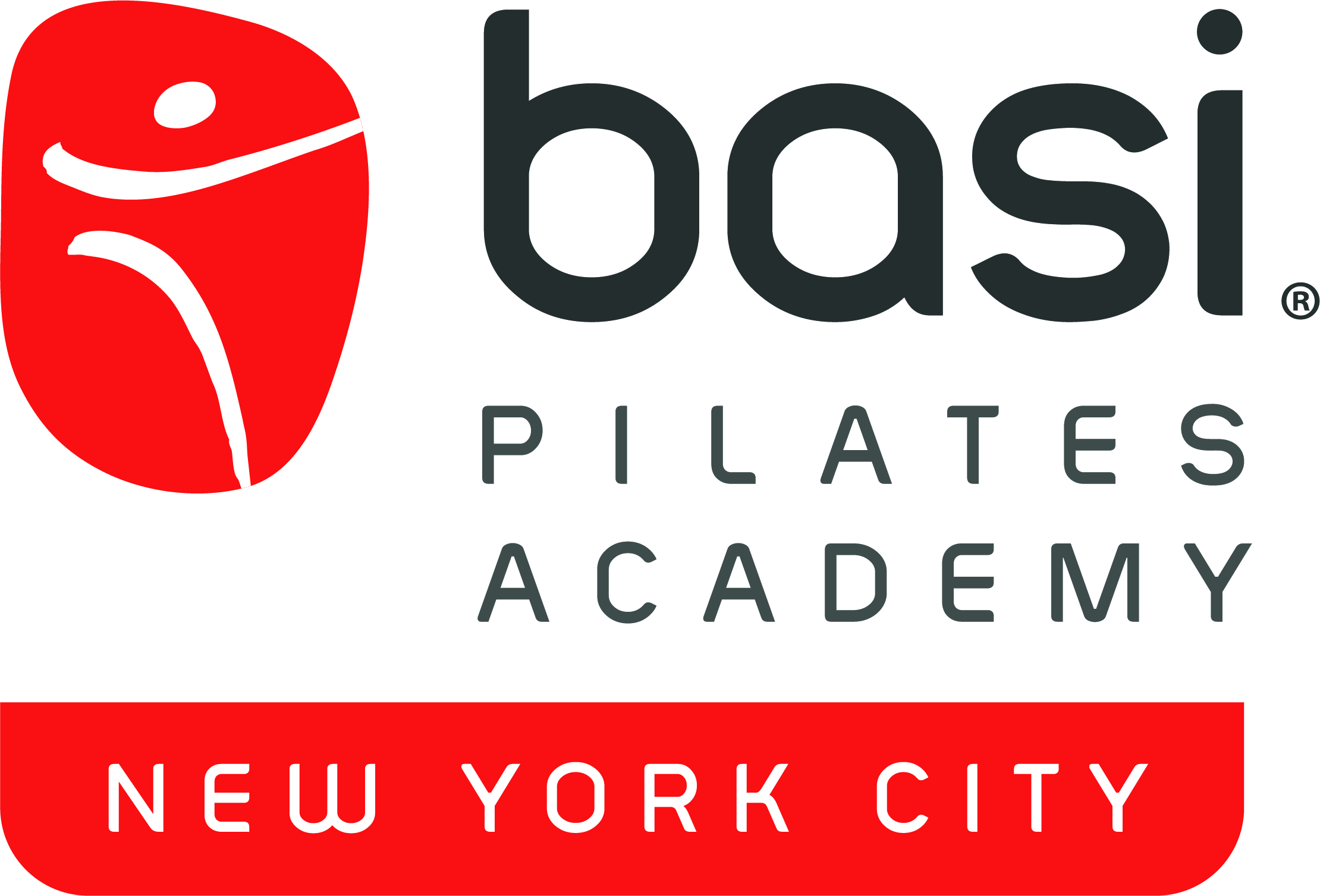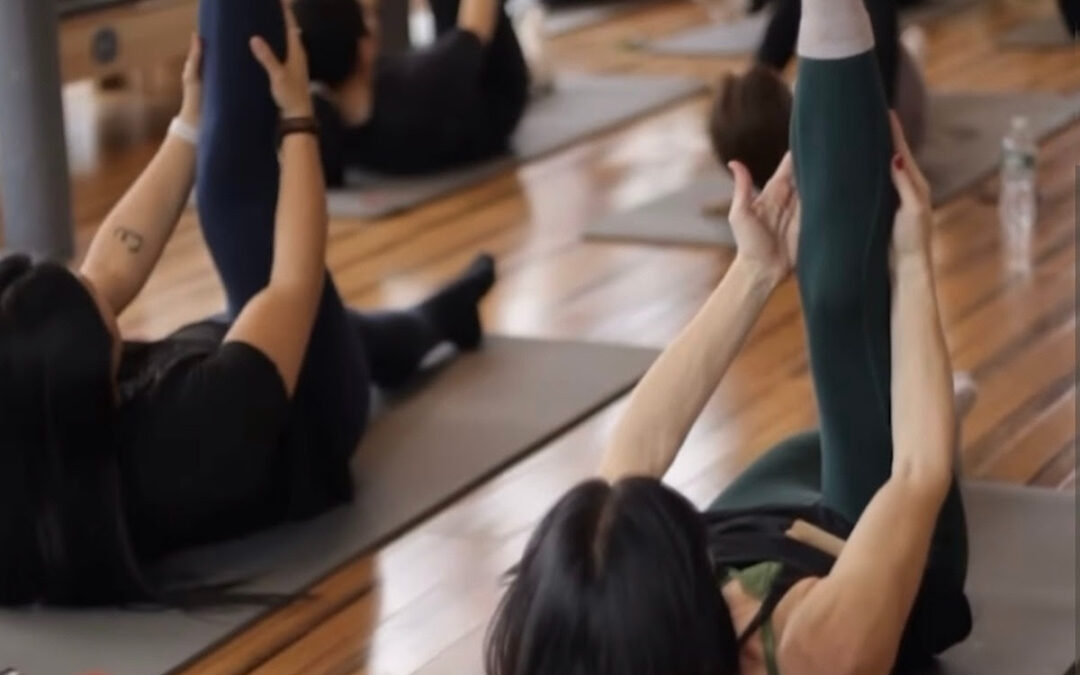In 2006 I opened both of my Pilates studios on credit cards. From day 1 my Brooklyn studio location collaborated with my husband’s growing practice which at the time was just him as the chiropractor but acting as the PT, nutritionist, and quarterbacking his patients’ healthcare with referring out to other doctors and practitioners for needs outside his scope. He was dreaming of a multidisciplinary approach where he could inter refer to colleagues with the same moral and holistic values.
Pilates was the first discipline that he integrated with internally referring patients back and forth with me as best suited to the patient’s care. He made me believe what I already knew, but with encouragement. I proudly moved forward sharing that Pilates was far more than just a form of exercise. It was a modality. He confidently referred his patients to me when he saw that someone needed corrective exercise.
Pilates, as a method, is both a set of principles and exercises. The way to truly soak up the benefits of Pilates is to combine these principles with the movement and focus on how you are doing the exercises. In the BASI Pilates Teacher Training course I emphasize the same key points that I emphasize with my everyday students who range from professional athletes to rehabilitation focused.
- Attention to the detailed setup and alignment of your joint structures against the precision of the movement.
- Focus on dynamic stability vs mobility. This will help you to feel a more sustainable sense of balance and strength in stability rather than a sense of pure held tension. Connecting to your breath and feeling the tactile connection of your relevant body parts to the mat is key.
- Eccentric and concentric contractions in tandem will encourage high quality movement patterns. Understanding that muscles mold to the shape of how you work them and, while muscles feel the strongest when they are short, functionally we want muscles to feel strong as they work in long ranges of motion. Don’t shy away from the unfamiliar or challenging feeling of moving in this way. And don’t mistake this for “stretching.” I find that getting comfortable with using your strength in longer ranges helps us to avoid passive or floppy movement that can sometimes unnecessarily put wear and tear on our joints.
Every time I teach the BASI Pilates Comprehensive Teacher Training, I reiterate to my students that Pilates is not the latest trend. Pilates is a modality with a long history, that when studied with discipline will create an organized and capable body with longevity.
Personally I have benefitted from the integrated model at Physio Logic the most in my hips. Both hips had PRP treatment with Dr. Palvia at one of our departments- Physio Logic Medicine. I saw Michelle in our clinical nutrition department for pre labs to check my blood and particularly my inflammatory markers which would affect my healing rates. I followed up with chiropractic and HBOT…. And of course PT & Pilates for life:) I feel blessed to have access to the best of the best and to be pain and discomfort free now in doing what I love. I strengthen the areas surrounding my hips more than ever rather than excessive stretching that I did for years as a dancer. To be honest, good dance training teaches this but I misread my tightness as strength and choose stretching exercises rather than strengthening. It is important to know that tight usually = weak.
The hip joints are the most stable joint in the body connecting the upper and lower body. The hip muscles listed below have strength and range of motion in a 360 degree. It is composed of the pelvis acting as the sockets that house the femur or thigh bones. The top of the femur bones are ball shaped hence the name “ball and socket joint.”
The pelvis position will determine the structure in which the femur bones move. Keeping this structure in a neutral placement allows for the more free range and access to the hip muscles which equates to functionality, efficiency, and pain free hips…and most likely the lower back too.
To briefly describe a neutral pelvis- it is essentially the alignment of the pubic bone in the same horizontal plane as the hip bones or asis bones. While a “neutral” alignment of the pelvis will create the optimal home for the hip joint to function, we never force the body into this position, rather you guide it there. The position you stabilize shouldn’t compensate for another joint structure in the body such as the thoracic and lumbar spine. The feet and the neck muscles will certainly affect the play on the hips and should be fully integrated into a program but for the sake of this blog I will focus on isolating the hip muscles.
These 3 separate series of exercises are helpful for injury prevention, rehabilitation after, and to keep strong able hips, glutes and legs. They are what keep my hips happy, strong, and pain free and among others, what I resort to for a tune up at least once a week if not more.
Gluteals Side Lying Series (BASI Pilates Comprehensive Program)
Side Leg Lifts:
Stability– Activate the hip extensors, or gluteal muscles, to ensure you aren’t using the lumbar extensors to hold the leg. Strong abdominals help to keep the pelvis dynamically stable and the bottom oblique actively lifting away from the mat.
Mobility– Feel the Hip abductors working
Cues– Here I have my hand on my lower back to feel if I am arching my back too much. Keep the leg parallel, it may feel slightly turned in when doing so. We teach this with a relaxed foot to add weight to the leg, although I show it with a neutral ankle and pointed foot. You will notice the last exercise demonstrates it with a relaxed foot. Try it both ways and feel the difference. Breathe!
Forward & Lift:
Stability– same as above
Mobility– Hip Abductors, hip flexors and Hamstrings
Cues– Think of biasing the sits bones back to feel a slight hamstring stretch on the forward action. Only bring the leg as far forward as you can keep the pelvis aligned.
Forward with Drops:
Stability-same as above
Mobility– Hip Abductors, hip flexors, hip adductors, hamstrings
Cues– Keep the top hip long and stacked on the bottom hip, bias the sit bone back to feel a slight hamstring stretch
Gluteals Kneeling Series (BASI Pilates Comprehensive Program)
Hip Extension Straight Knee:
Stability– Press shoulders and collar bone wide, scapula on the spine. Abdominals help stabilize the pelvis and prevent extending into the lower back. Quads keep the knee straight
Mobility– hip extensors
Cues– Imagine pressing the floor away. Keep lower back supported to cancel out any unwanted movement there as the leg lifts. You will notice my exaggerating the lower back tendency here to make sure I am really pulled up. Try it to see what your tendency is.
Hip Extension Bent Knee:
Stability– Press shoulders and collar bone wide, scapula on the spine. Abdominals help stabilize the pelvis and prevent extending into the lower back. Hamstring keeps the knee bent to 90.
Mobility– Hip extensors
Cues– Same as above
Hip Abduction Bent Knee:
Stability– Press shoulders and collar bone wide, scapula on the spine. Abdominals help stabilize the pelvis and prevent extending into the lower back.
Mobility– Hip abductors, obliques
Cues– Imagine pressing the floor away. Keep lower back supported to cancel out any unwanted movement there as the leg lifts. Keep weight very light in the opposite arm to prevent sitting into the grounding hip.
Hip Fundamentals Activation / Isolation Exercises
Internal Rotation-
Knee and hip at 90 degrees. Spin the thigh bone internally
External Rotation-
Knee and hip at 90 degrees, lift the knee off the ground accepting small deep movements.
Hip Flexor Prep-
Hip Circles Prep- Hip Flexion- Feel healthy hip flexion of the thigh bone in the socket. Focus on pelvis positioning and avoid slouching.
Hip Extension Prone–
Lift both legs together from the hip extensors. Activate the muscles around your sits bones and avoid any knee flexion.
FOLLOW US
For full length videos that benefit our scholarship program visit Virtualogic.earth

